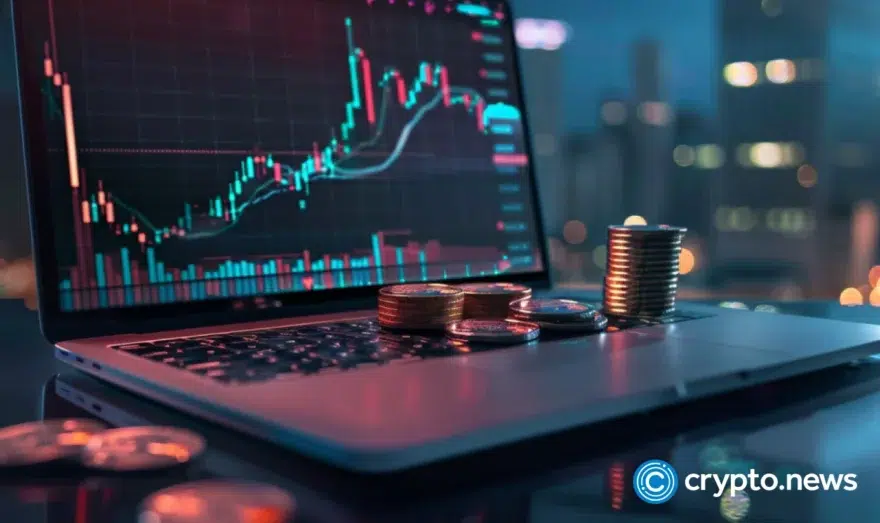Did Jump Trading just ‘Fracture’ the trust of the entire crypto industry?

Is Jump Trading responsible for the collapse of DIO tokens? How did a market maker supposedly take advantage of a partnership with Fracture Labs to pocket millions and leave chaos behind?
Jump Trading, a prominent name in the crypto trading space, is now entangled in a legal battle. Fracture Labs, the creators of the blockchain-based game Decimated, has sued Jump, accusing the firm of executing a “pump and dump” scheme.
At the heart of the lawsuit, Fracture Labs claims Jump Trading exploited its role as a market maker to inflate the value of its DIO gaming token artificially. Once the price peaked, Jump allegedly sold off its holdings, triggering a sharp price decline.
How does a collaboration designed to promote a token’s success devolve into allegations of fraud and manipulation? Let’s break down the sequence of events leading up to the lawsuit and why it has drawn so much attention.
Table of Contents
What happened between Jump Trading and Fracture Labs?
On Oct. 15, Fracture Labs filed a lawsuit against Jump Trading in an Illinois district court, accusing the firm of breaching their agreement and manipulating the DIO token.
To fully grasp the situation, we need to revisit 2021. During this time, Fracture Labs had just launched its DIO token to support its blockchain game, Decimated, and entered a partnership with Jump Trading to facilitate the token’s market introduction.
Jump Trading agreed to serve as a market maker—a role that involves providing liquidity to ensure smooth trading and price stability for the token. Market makers typically buy and sell assets to maintain balanced trading conditions, especially for newly launched tokens like DIO.
As part of the arrangement, Fracture Labs loaned 10 million DIO tokens to Jump, valued at approximately $500,000 at the time. The expectation was that Jump would assist in the token’s debut on the crypto exchange Huobi (HT), now known as HTX.
In addition to the loaned tokens, Fracture Labs sent 6 million more tokens directly to HTX, worth about $300,000, as part of its broader marketing campaign. With these preparations in place, everything seemed primed for a successful launch.
HTX played its part by heavily promoting the DIO token and leveraging influencers and social media campaigns to boost its visibility.
The strategy appeared successful — perhaps overly so. The price of DIO surged to $0.98, dramatically raising the value of Jump’s 10 million DIO holdings from $500,000 to a staggering $9.8 million in a short period.
For Jump Trading, this price surge represented an enormous windfall. The 10 million tokens they had borrowed were suddenly worth nearly $10 million. However, what followed is where the allegations of manipulation arise.
Fracture Labs alleges that Jump Trading saw the soaring price as a profit-making opportunity. Instead of continuing to provide liquidity and stabilize the token, Jump allegedly began selling off its DIO holdings in large quantities.
This mass sell-off caused a steep drop in DIO’s value, plummeting from nearly a dollar to just $0.005—a dramatic collapse that decimated the token’s worth.
The lawsuit further claims that after selling the tokens at their peak, Jump repurchased the devalued DIO tokens for just $53,000. This allowed Jump to return the 10 million tokens it had borrowed, fulfilling its obligation to Fracture Labs, all while pocketing millions in profit.
Breach of trust and legal fallout
The collapse of DIO’s price had devastating consequences for Fracture Labs. According to the lawsuit, the sudden and severe drop in value crippled the company’s ability to attract new investors or sustain interest in the DIO token.
Adding to their troubles, Fracture Labs had deposited 1.5 million Tether (USDT) into an HTX holding account as a safeguard against accusations of market manipulation. This deposit was intended to reassure the market that Fracture Labs would not manipulate DIO’s price during its first 180 days of trading.
However, due to the extreme price volatility that Fracture Labs claims were triggered by Jump Trading’s actions, HTX allegedly refused to return most of the USDT deposit. This left Fracture Labs with not only a devalued token but also a substantial financial loss from their USDT deposit.
Fracture Labs is now accusing Jump Trading of fraud, civil conspiracy, breach of contract, and breach of fiduciary duty. They assert that Jump Trading abused the trust placed in them as a market maker, using their privileged position to manipulate DIO’s price for personal gain.
The lawsuit seeks damages, the return of the profits that Jump allegedly made from the scheme, and a jury trial to settle the matter. Interestingly, HTX is not named as a defendant in the lawsuit.
Jump Trading’s troubled past
The controversy surrounding Jump Trading is not new, as the firm has been under regulatory scrutiny multiple times in recent years.
In fact, both Jump Trading and its crypto arm, Jump Crypto, have faced several legal and regulatory challenges, raising concerns about their operations in the crypto market.
One of the more prominent cases surfaced in November 2023, when Jump Crypto’s involvement came under the spotlight in the U.S. Securities and Exchange Commission’s lawsuit against Terraform Labs.
The lawsuit, originally filed in February 2023, alleged that Terraform Labs and its former CEO, Do Kwon, engaged in fraudulent activities and sold unregistered securities, focusing on their failed algorithmic stablecoin, TerraUSD (UST).
The collapse of UST in May 2022 led to billions of dollars in losses and significant turmoil across the broader crypto market.
According to the SEC, when UST first began losing its dollar peg in 2021, Terraform Labs collaborated with Jump Crypto to artificially boost the stablecoin’s value.
The regulator claimed that Jump Crypto purchased large amounts of UST to restore its price, temporarily stabilizing the asset. However, when UST experienced its final collapse in May 2022, no similar intervention took place.
Terraform Labs, however, denied these claims, stating that Jump Crypto’s actions had no bearing on UST’s earlier recovery.
In April 2024, Terraform Labs reached a settlement with the SEC, agreeing to pay $4.47 billion after a jury found them liable for defrauding investors. The settlement included $420 million in civil fines, $3.6 billion in disgorgement, and $467 million in interest.
Although Jump Crypto was linked to UST’s earlier recovery efforts, it was neither charged nor formally implicated in any wrongdoing as part of the settlement.
By June 2024, Jump Crypto found itself under investigation by another U.S. regulatory body—the Commodity Futures Trading Commission. The CFTC launched a probe into Jump Crypto, reportedly scrutinizing its trading and investment activities within the crypto sector. Kanav Kariya, the firm’s former president, resigned just days later.
While the specifics of the investigation remain confidential, and no official allegations have been made, the probe reflects a broader push by U.S. regulators, including the CFTC, to intensify their enforcement actions against crypto firms throughout 2023 and 2024.
What to expect next?
If Fracture Labs succeeds in proving Jump Trading’s misconduct, it could trigger a major shift across the crypto industry, leading to tighter regulations and increased scrutiny of market makers.
However, this case is more than just one lawsuit. Governments, especially in the U.S. and Europe, are actively developing policies aimed at curbing market abuses. This case might provide regulators with the prime example they need to justify stricter oversight of market makers.
Additionally, token creators may start advocating for decentralized solutions or pushing for more restrictive contracts that limit the influence of market makers.
For the crypto industry to truly mature, this could be a crucial moment that compels everyone — projects, exchanges, and investors — to reevaluate how tokens are launched and managed, placing a greater emphasis on fairness and trust.















